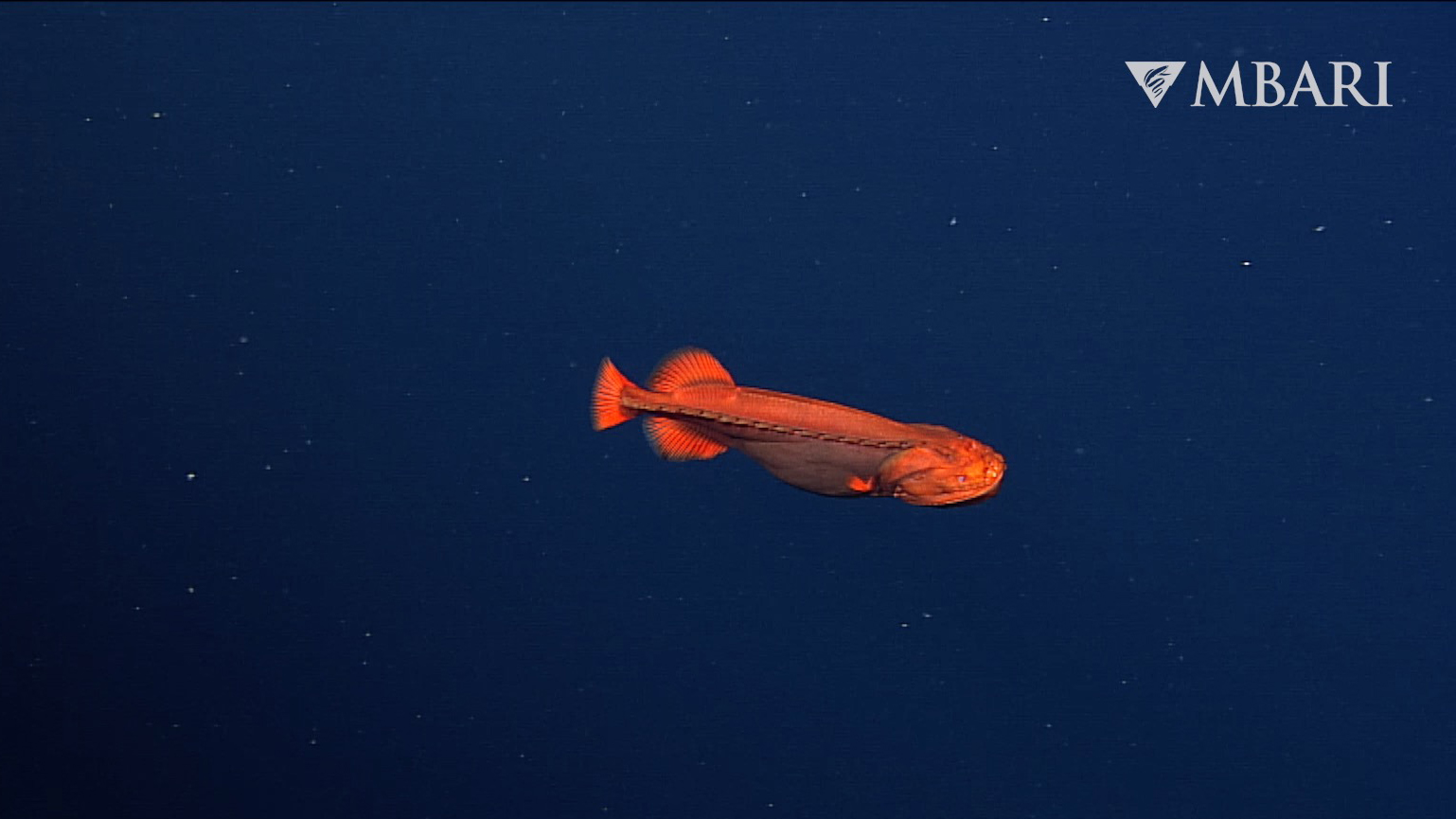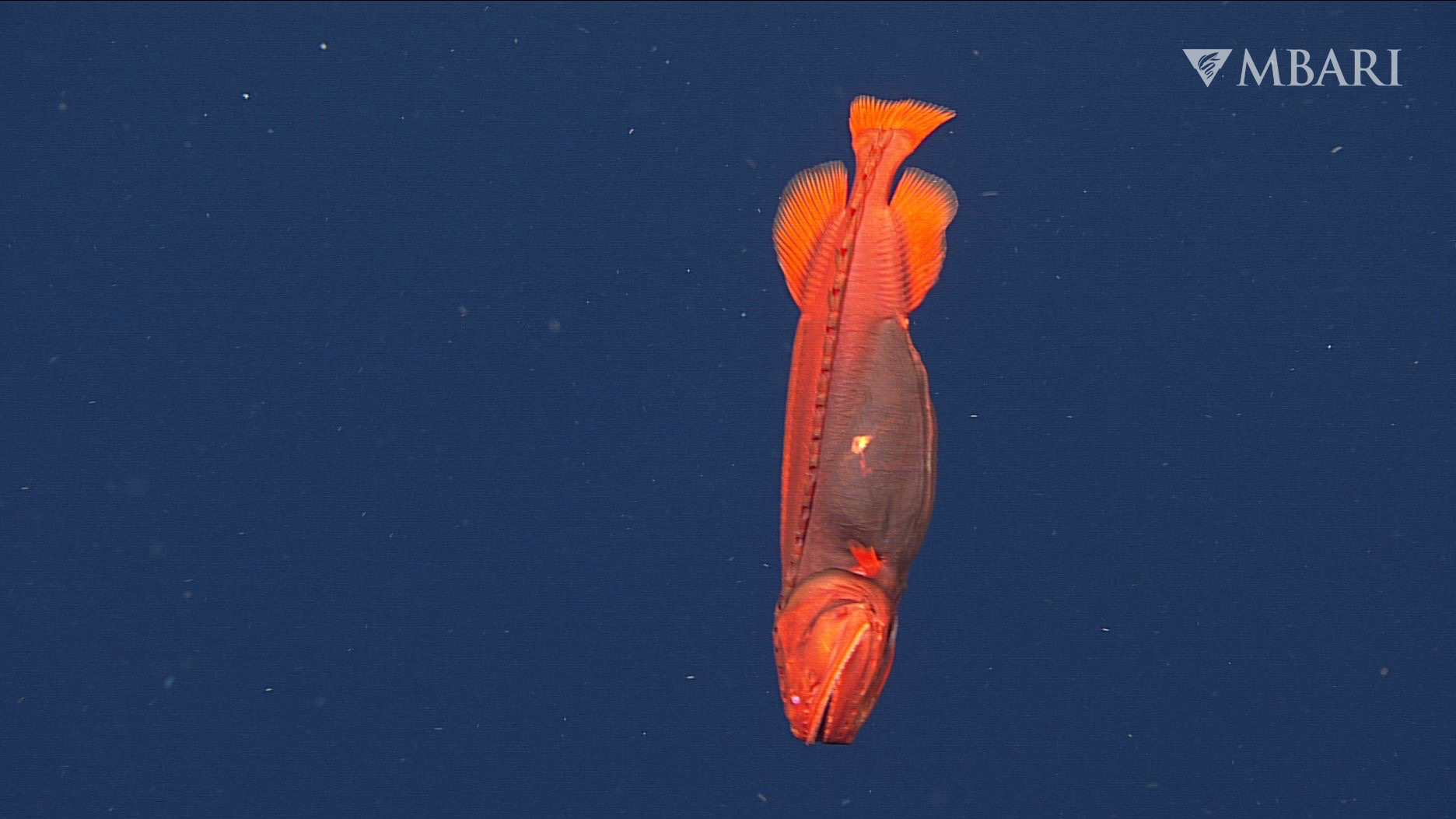Shape-shifting fish that confounded scientists for 100 years spotted off California coast
The whalefish’s body changes dramatically across its lifespan.
Scientists piloting a remote submarine have caught a rare glimpse of one of the deep sea’s most mysterious and elusive creatures.
The bright orange, female whalefish (of the order Cetomimiformes) was spotted half-swimming, half-gliding through the glare of submarine's lights around 6,600 feet (2,013 meters) deep offshore of Monterey Bay, California. The whalefish sighting was one of only 18 made by marine biologists from The Monterey Bay Aquarium Research Institute during 34 years of deep-sea exploration.
"Whalefish have rarely been seen alive in the deep, so many mysteries remain regarding these remarkable fish," the Monterey Bay Aquarium Research Institute tweeted. "With each deep-sea dive, we uncover more mysteries and solve others."
Related: In photos: Spooky deep-sea creatures



So little is known about the lives of whalefish that for more than a century after their discovery (they were first recorded in 1895 by two Smithsonian Institution scientists), the three vastly different forms the animals may take across their life cycles were mistaken for entirely different zoological families.
First, there are the tapetails: scaleless larval forms with long, streamer-like tails and mouths that seem to have a comical overbite; they live and feed near the ocean’s surface. When the time comes for these fish to assume their adult forms, two vastly different body shapes await them.
If they are male, the tapetails become bignoses: Scales sprout across their body, their mouths shrink to miniscule proportions as their jawbones waste away and their noses balloon outward. As they'll never feed again, their intestines, esophagus and stomach all shrivel and disappear. Their chest cavity is instead filled by their sexual organs and a gigantic liver as an energy store. The moments before the male tapetail's metamorphosis could be described as a feeding frenzy: The creatures will stuff themselves with tiny crustaceans called copepods to help power them through the remainder of their lives as mobile sperm-delivery systems.
Get the world’s most fascinating discoveries delivered straight to your inbox.
Females undergo a no less dramatic transformation. Their bodies expand to resemble a miniature baleen whale, growing to sizes far greater than their male counterparts, and they develop water pressure-detecting lateral lines along their flanks to guide them through the pitch-black depths. In some species, the females' bodies change to a shade of brilliant orange; as red and orange colors of light cannot penetrate the depths they live in, this coloring makes the fish virtually invisible.
Both males (bignose fish) and females (whalefish) tend to be spotted at depths between 4,920 and 6,560 feet (1,500 to 2,000 meters) beneath the ocean's surface, although some reports have claimed that they can go far deeper still to depths beyond 11,500 feet (3,500 meters) .
The bizarre transforming acts Cetomimiformes perform are unprecedented among vertebrates, for decades no one knew that the different body types belonged to the same zoological family. It was only in 2009 that a study of mitochondrial genes, or genes that trace the maternal line, (alongside careful analyses of the animal specimens collected mid-transformation) enabled researchers to conclusively prove that the tapetails, bignoses and whalefish in their study belonged to the same species.
However, this discovery was made in just one species, and the elusiveness of the deep-ocean dwelling animal means that the family trees for many whalefish species may never be completed.
Little is known of the fish's habits either, but scientists think whalefish migrate up to around 2,000 feet (600 m) beneath the sea surface to feed by starlight, retreating to the safety of the depths as day breaks.
Originally published on Live Science.

Ben Turner is a U.K. based writer and editor at Live Science. He covers physics and astronomy, tech and climate change. He graduated from University College London with a degree in particle physics before training as a journalist. When he's not writing, Ben enjoys reading literature, playing the guitar and embarrassing himself with chess.


